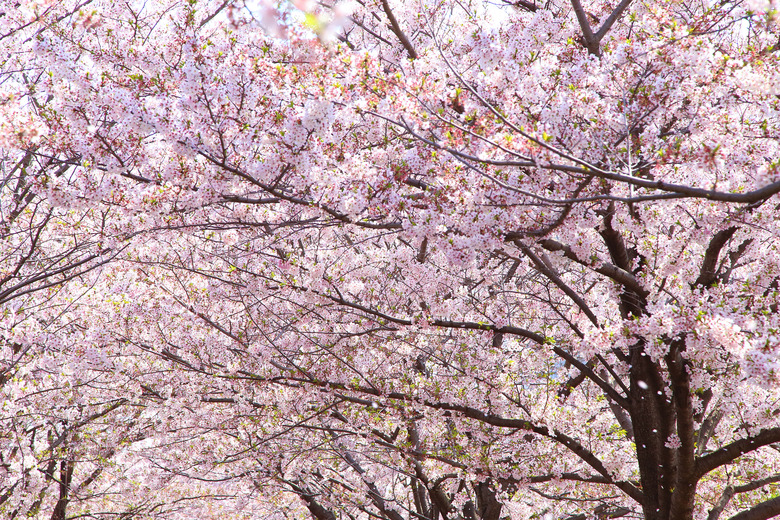How To Care For A Yoshino Cherry Tree
We may receive a commission on purchases made from links.
If you love the idea of beautiful, fragrant flowering trees welcoming spring with vibrant color, a Yoshino cherry tree (Prunus x yedoensis) is worth considering. Also called the Japanese flowering cherry, this gorgeous tree is a perennial in U.S. Department of Agriculture plant hardiness zones 5 through 8. You've likely seen the pinkish-white, almond-fragranced blooms of Yoshino cherry trees in images of Washington, D.C., in springtime.
In addition to two or three weeks of showy blooms, this tree also grows fruit that birds love, but it's too bitter for humans to eat. This cherry tree grows quickly at a rate of 13 to 24 inches per year, and it reaches heights of 30 to 40 feet with a spread of 20 to 50 feet when properly cared for.
Yoshino Cherry Tree Planting Location
Yoshino Cherry Tree Planting Location
When growing a cherry tree, choosing a prime location ensures the tree gets the sunlight and soil qualities it needs. Yoshino cherry trees love full sun, but they can also handle a partially shady spot as long as they get at least six hours of direct sunlight each day. A tree planted in partial shade often has fewer flowers in the spring, so your cherry tree might not be quite as impressive in a shady location.
Soil requirements are a little more flexible for this tree. It can grow in most soil conditions, including loamy, sandy, acidic and clay soils. Its major soil preference is that the soil is moist. Adding mulch around the tree in a 2- to 3-inch layer after planting it helps to hold in moisture and cut down on weeds. Leave a few inches between the mulch and the cherry tree's trunk.
Planting a Yoshino Cherry Tree
Planting a Yoshino Cherry Tree
Ideal planting times are early spring when there's no longer a threat of frost or in early fall. If you plant the tree in fall, make sure there's enough time for the roots to grow and become established before the first freeze.
Dig a hole that's twice as wide and only as deep as the tree's root ball. Make sure the tree is planted at the same soil level as it was in the nursery container. Backfill the hole and water your new ornamental cherry tree well.
Watering a Yoshino Cherry Tree
Watering a Yoshino Cherry Tree
Yoshino cherry trees do best with consistent moisture, especially young trees that are still establishing their roots. However, these trees have mild drought tolerance, so they can go a short time without water. If you're getting plenty of rain, the tree likely doesn't need supplemental water. However, if the top 2 inches of the soil dry out due to lack of rain, it's a good idea to give the tree a deep watering. Apply the water slowly over about 30 minutes underneath the tree's canopy to allow the water to soak in without running off and to reach deeply into the soil.
Fertilizing and Pruning a Yoshino Cherry Tree
Fertilizing and Pruning a Yoshino Cherry Tree
Hold off on fertilizing for the first two years. After that, apply a slow-release fertilizer that contains nitrogen in the early spring months as the tree starts to grow, only according to soil-test recommendations. In the absence of a soil test, follow label directions for how and when to apply the fertilizer.
The Japanese flowering cherry tree naturally grows in an attractive rounded shape, so it doesn't need much pruning. Grab a pruning tool if you notice any damaged or diseased branches. Because cherry trees are prone to disease, be sure to sanitize your pruning tool by wiping it with isopropyl alcohol before each cut that you make. Trim out those branches immediately to keep the tree healthy. You can also prune branches that appear crowded to ensure the strongest, healthiest branches have enough space to grow. If you want to prune for shape or size, the best time to do it is in early summer after it's finished flowering.
